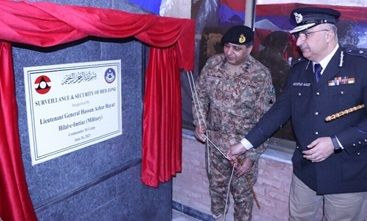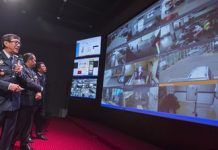The Khyber Pakhtunkhwa government has installed an artificial intelligence-powered “command and control system” for the security of the provincial capital’s red zone. The system, the first of its kind in the country, was inaugurated by Peshawar Corps Commander Lieutenant-General Ahsan Azhar Hayat at the Central Police Office.
With the help of 365 surveillance cameras and facial and vehicle recognition features, it will identify all visitors to the red zone, according to provincial police chief Akhtar Hayat. He told reporters that almost 50,000 people visited the red zone daily.
“Making the provincial capital safe from terrorism is our first priority of the police, so this AI-powered command and control system has been installed. Equipped with modern gadgets for vehicle and pedestrian identification and modern communication system, it will be extended to Bala Hissar Fort and Aman Chowk in the second phase,” he said.
Meanwhile, the police chief’s office issued a statement reading that the basic purpose of the AI-driven command and control system was to ensure security of installations in the red zone as well as to make an integrated automatic system of the entry of registered employees.
“An alarm will alert police about the entry of suspicious persons and vehicles to the red zone, while all field officers will be promptly informed through the communication system. This is the first phase of a highly-guarded security system for the security from the Central Prison’s Gate, police lines main gate, Civil Secretariat, Governor’s House, Chief Minister’s House and Secretariat, and other important buildings,” it read.
According to the statement, the command and control system will be easily accessed by all field commanders and that it will improve the operational capabilities of the police to tackle emergency and crisis situations. In Sept 2022, a provincial inspection team report recommended action against the officials of the Project Management Unit of the Peshawar Safe City Project over failure to delay the system’s installation.
“Records revealed that the expenditures in respect of fuel were unjustified, salaries for the vacant posts without the revision of PC-I were not covered under the law and expenditure of Rs 2.9 million for purchasing furniture only for five officials was unjustified,” the report read.
It added that non-recruitment of the relevant technical staff despite availability of posts and funds was another reason for the delay.
The project was initially launched in 2009 by the federal government with China, according to the report, to provide a soft loan on the condition that it would be contracted to the Chinese firm Huawei.








